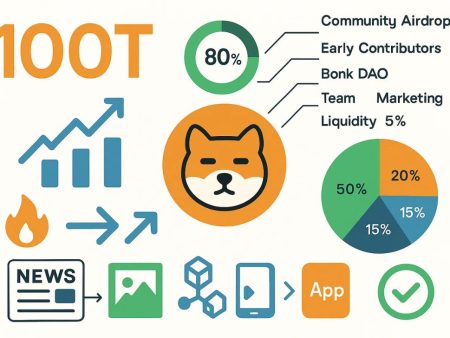Is crypto mining profitable in 2025? This question is on the minds of many miners as rising electricity costs, increasing mining difficulty, and Bitcoin halving continues to shape the industry.
In this article, TopCoin9 will help you explore the key factors influencing mining profitability, return on investment (ROI), future trends shaping the industry, and ultimately answer this important question!
Understanding Crypto Mining Profitability

Before exploring the question is crypto mining profitable in 2025, we should first understand its meaning. Crypto mining profitability depends on several critical factors, including energy costs, mining difficulty, hardware efficiency, and market conditions. Let’s break down these components:
- Electricity Costs: Electricity is the biggest expense for crypto miners. In 2025, countries with cheap and sustainable energy sources, like hydroelectric or solar power, will have a competitive advantage. Miners who operate in regions with high electricity costs may struggle to generate profits unless they adopt energy-efficient solutions.
- Mining Difficulty & Hashrate: Mining difficulty adjusts automatically to maintain a consistent block production time. As more miners join the network, competition increases, making it harder to mine new coins. In 2025, with institutional miners and mining farms dominating space, individual miners using outdated hardware may find it challenging to keep up.
- Hardware & Efficiency: Mining hardware plays a crucial role in profitability. The efficiency of ASIC miners and GPUs directly affects how much electricity is converted into mining power. In 2025, newer models with better energy efficiency will likely outperform older rigs. Miners who fail to upgrade may experience diminishing returns.
- Crypto Market Conditions: Crypto prices fluctuate based on market demand, adoption, and global economic factors. A bull market can significantly increase mining profitability, while a prolonged bear market can reduce rewards. Predicting market trends is essential for miners looking to maximize profits.
With these factors in mind, understanding how mining ROI works in 2025 is the next logical step. Find out more in the next section!
Crypto Mining ROI in 2025: Key Factors

Return on Investment (ROI) in crypto mining is a crucial metric that determines whether mining remains a viable business. Here are the key aspects affecting mining ROI in 2025:
- Initial Investment Costs: To start mining, individuals and businesses must invest in powerful hardware, cooling systems, software, and secure facilities. In 2025, the rising cost of mining rigs makes it crucial for miners to calculate their break-even point before investing.
- Mining Rewards & Bitcoin Halving: Bitcoin halving events occur every four years, reducing block rewards by 50%, directly impacting mining profits. After the 2024 halving, miners earn only 3.125 BTC per block, making transaction fees and efficiency more critical for profitability.
- Mining Pool vs. Solo Mining: Solo mining offers higher rewards but comes with greater risks and inconsistent earnings, while mining pools provide a more stable income but require sharing profits. In 2025, most small and medium-sized miners will likely join pools to improve their chances of earning steady returns.
- Operational Costs & Energy Efficiency: Mining profitability depends heavily on electricity, maintenance, and infrastructure costs. To maximize ROI, miners are adopting energy-efficient solutions like solar power, immersion cooling, and optimized mining setups.
As mining ROI fluctuates based on these variables, looking ahead to future trends is essential to predict whether profitability will sustain in the long term. Let’s explore that in the next section!
Future of Mining Profitability: Trends and Predictions

Looking ahead, several key trends will influence the future of mining profitability in 2025 and beyond:
- Transition to Renewable Energy: With increasing environmental concerns, miners are shifting towards renewable energy sources like solar, wind, and hydroelectric power. Countries with abundant clean energy will become mining hubs, reducing operational costs and increasing sustainability.
- AI & Machine Learning Integration: AI and machine learning are being leveraged to optimize mining operations, predicting market trends, adjusting mining strategies, and improving energy efficiency. Companies that integrate AI-powered mining management systems will have a competitive edge.
- The Rise of Alternative Cryptocurrencies: While Bitcoin remains the dominant cryptocurrency for mining, alternative coins like Ethereum Classic, Litecoin, and Kadena offer miners new opportunities. Diversifying mining efforts can help mitigate risks and improve profitability.
- Regulatory & Tax Implications: Governments worldwide are tightening regulations on crypto mining taxes. Some countries impose taxes on mining profits, while others provide incentives for sustainable mining operations. Staying updated on regulatory changes is crucial for miners looking to maintain profitability.
Given these emerging trends, it’s time to address the ultimate question: Is crypto mining profitable in 2025?
Is Crypto Mining Profitable in 2025?

The answer depends on several factors, including location, energy costs, hardware efficiency, and market conditions. Here’s a breakdown of the potential outcomes:
Profitable Scenarios
- Large-scale mining farms in regions with cheap electricity and sustainable energy solutions.
- Miners who invest in energy-efficient hardware and optimize operational costs.
- Adaptive strategies, such as switching between different cryptocurrencies based on profitability.
Less Profitable or Unprofitable Scenarios
- Small-scale or home miners face high electricity costs and lack access to advanced mining rigs.
- Miners rely solely on outdated hardware with low energy efficiency.
- Highly regulated regions where taxes and restrictions reduce profit margins.
Alternative Profitability Strategies
If traditional mining becomes unprofitable, some miners may pivot to:
- Cloud mining services: Renting mining power instead of owning hardware.
- Staking and DeFi yield farming: Alternative ways to earn passive crypto income.
- Providing mining-related services: Selling mining software, hosting services, or consulting.
Is crypto mining profitable in 2025? The answer depends on factors like electricity costs, mining difficulty, and Bitcoin halving. While challenges exist, smart strategies and efficient setups can still make mining profitable. Stay tuned for more insights from TopCoin9 to keep up with the latest trends in crypto mining!

Ethan Carter, a seasoned crypto analyst with 7+ years of experience, has a deep understanding of market trends, DeFi, and blockchain technologies. His expert insights and market forecasts have helped thousands of traders and investors make informed decisions.
Email: [email protected]












